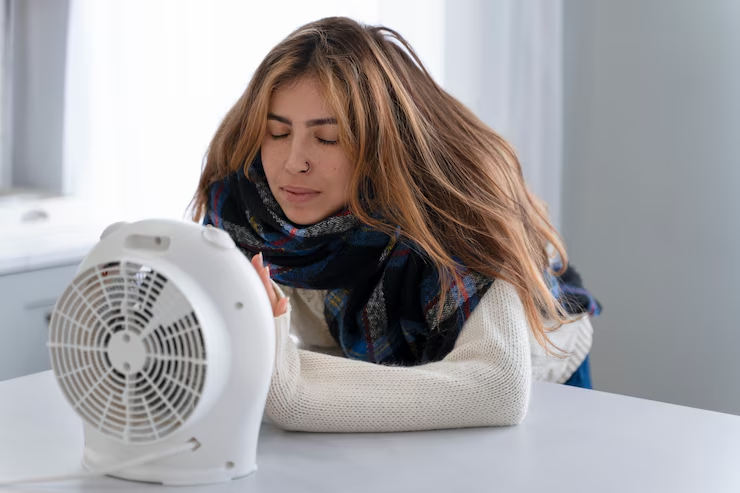An Air Vent is a simple yet essential part of your home’s ventilation system. Without a proper air vent, your living space can feel stuffy, and the air quality can worsen over time. In this blog post, we will explore the importance of air vents, how they work, and how to choose the best one for your needs.
Air vents help regulate airflow, making sure that fresh air circulates while stale air is removed. Whether you’re installing a new system or replacing an old one, understanding the function of your air vent is crucial for a healthier and more comfortable home.
What is an Air Vent? Understanding Its Role in Your Home
An air vent is a small but crucial part of your home’s ventilation system. It helps air move in and out of different rooms, keeping your indoor air fresh. These vents are usually found on walls, ceilings, or floors and connect your home to the outdoors.
Air vents work by allowing fresh air to enter and allowing stale, polluted air to exit. This process helps reduce indoor humidity, prevent mold, and improve overall air quality. Without air vents, your home could become stuffy and uncomfortable, and indoor air could get filled with dust or moisture. Understanding how these vents work is essential for making sure you have healthy air in your home.
Why Your Home Needs a Proper Air Vent
Proper ventilation is key to a healthy home. If you don’t have enough air vents, your home might feel stuffy or even lead to the growth of harmful mold. Air vents help by moving air around, preventing too much moisture from building up inside your home. They can also help reduce the buildup of unwanted odors.
In addition, air vents help prevent excess heat in summer and retain warmth during winter, which can save you money on your energy bills. When you ensure the right air vents are installed and working properly, your home will feel more comfortable all year round.
How Air Vents Improve Indoor Air Quality and Comfort
Air vents play a huge role in improving the air quality inside your home. They help push out old air and bring in fresh air, which keeps the indoor atmosphere comfortable. This fresh air can reduce the chances of developing allergies caused by dust or pollen.
In rooms like kitchens and bathrooms, air vents are extra helpful. They help remove steam and smoke, which could lead to condensation or mold growth. This keeps your home not only fresher but safer to live in.
Types of Air Vents: Which One Is Right for Your Home?
There are different types of air vents available, each serving a specific purpose. Below are some of the common types:
- Wall vents: These are usually installed in the walls to allow air to flow from one room to another. Wall vents are often used in areas like bedrooms and living rooms.
- Ceiling vents: As the name suggests, these vents are installed in the ceiling. They are typically used to remove hot air from the room.
- Floor vents: These vents are placed in the floor and are useful for circulating air throughout the home, especially in spaces with central heating systems.
Choosing the right type of vent depends on your home’s size, layout, and the purpose of the space.
How to Choose the Best Air Vent for Your Space

Choosing the right air vent for your home can be tricky, but following a few simple steps will make it easier. First, decide where you need the vent. For instance, kitchen or bathroom areas need vents that can handle moisture, while living rooms may need ones focused on air circulation.
Next, consider the size of the vent. Larger vents are suitable for bigger rooms, while smaller vents are better for compact spaces. You also want to ensure that the vent’s design matches your home’s style. After all, an air vent should blend well with the room while serving its function.
Tips for Choosing the Best Air Vent:
- Measure the room size before buying a vent.
- Pick a vent that fits with your home’s overall design.
- Make sure it can handle the specific needs of the room (like moisture in bathrooms or kitchens).
Air Vent Installation Tips: Easy Steps to Follow
Installing an air vent might sound like a complicated job, but it’s a simple task if you follow these easy steps. First, decide the best location for your vent. It should be placed where air can circulate freely, away from obstructions like furniture or curtains.
Next, you’ll need the right tools. Most air vents require a screwdriver, a level, and a drill. Start by marking the spot where you want the vent, then carefully drill the hole and install the vent cover. Be sure to secure it tightly so that air can flow through easily.
Maintaining Your Air Vent for Long-Term Efficiency
To keep your air vents working well, it’s important to clean them regularly. Dust and dirt can build up inside the vent, making it harder for air to flow. Cleaning once every few months can keep the air vent in great condition.
Additionally, check the vent for any blockages. Sometimes, furniture or dust can block the airflow, which can reduce efficiency. Regular maintenance will help the air vent last longer and keep your home’s air fresh.
Common Air Vent Problems and How to Fix Them
While air vents are built to last, they can sometimes have problems. Some common issues include blocked vents, noisy vents, or improper airflow. If you notice a blockage, try removing the vent cover and cleaning it. Dust or dirt can stop the air from flowing properly.
If your vent is making noise, check to see if the vent cover is loose or if there is something stuck inside. In some cases, the vent might need to be adjusted or replaced if it’s not working well. Knowing how to fix simple problems can save you time and money on repairs.
How Often Should You Clean Your Air Vent? A Simple Guide
Cleaning your air vent is an easy way to ensure it continues to work properly. In general, it’s a good idea to clean your vent every 3 to 6 months. If you live in a dusty area, or if you have pets, you might need to clean your vent more often.
To clean your air vent, use a vacuum to remove dust and debris from the vent cover and the duct. For a deeper clean, you can remove the cover and wipe it down with a damp cloth. Regular cleaning will keep your air vent working efficiently and help improve the air quality inside your home.
The Connection Between Air Vents and Energy Efficiency
Air vents are more than just a way to circulate air—they can also help save energy. When air vents are properly installed and maintained, they help regulate the temperature inside your home, reducing the need for heating and cooling systems to work harder. This can lead to lower energy bills and a more comfortable living environment.
Proper airflow allows your HVAC system to work efficiently, making it easier to keep your home at a comfortable temperature without using excessive energy. If you’re looking to save energy, make sure your air vents are clean, well-placed, and in good working condition.
Why Air Vents Are Key to Preventing Mold and Dampness in Your Home

Air vents play an essential role in preventing the buildup of moisture inside your home. Without proper ventilation, humidity can get trapped in rooms, especially in places like bathrooms and kitchens. This moisture can lead to mold growth, which can harm both your home and your health.
When air vents work properly, they allow moisture-laden air to escape, helping keep the indoor environment dry. This is particularly important in areas where water vapor is high, like bathrooms, laundry rooms, or basements. By improving airflow, air vents help maintain a healthier home environment and prevent potential mold-related problems.
Conclusion
In conclusion, air vents are an essential part of keeping your home comfortable and healthy. They help bring in fresh air and remove stale air, making sure the air quality stays good. Properly installed and maintained air vents can save you money by improving energy efficiency and preventing problems like mold or humidity.
Remember to regularly clean and check your air vents. This will help them work better and last longer. If you ever notice an issue, like poor airflow or strange noises, don’t hesitate to get your vents inspected. With a little care, your air vents will continue to keep your home fresh and cozy for years to come.
FAQs
Q: How often should I clean my air vent?
A: It’s a good idea to clean your air vent every 3 to 6 months to keep it working well.
Q: Can air vents help with mold problems?
A: Yes, air vents help remove excess moisture, which can prevent mold from growing inside your home.
Q: What type of air vent is best for a bathroom?
A: A ceiling air vent is ideal for bathrooms because it helps remove steam and moisture.
Q: How can I tell if my air vent is blocked?
A: If air is barely coming out, or the vent cover is dirty, it could be blocked. Try cleaning it first.
Q: Can I install an air vent myself?
A: Yes, but if you’re unsure where to place it, it’s best to ask a professional to ensure it works correctly.